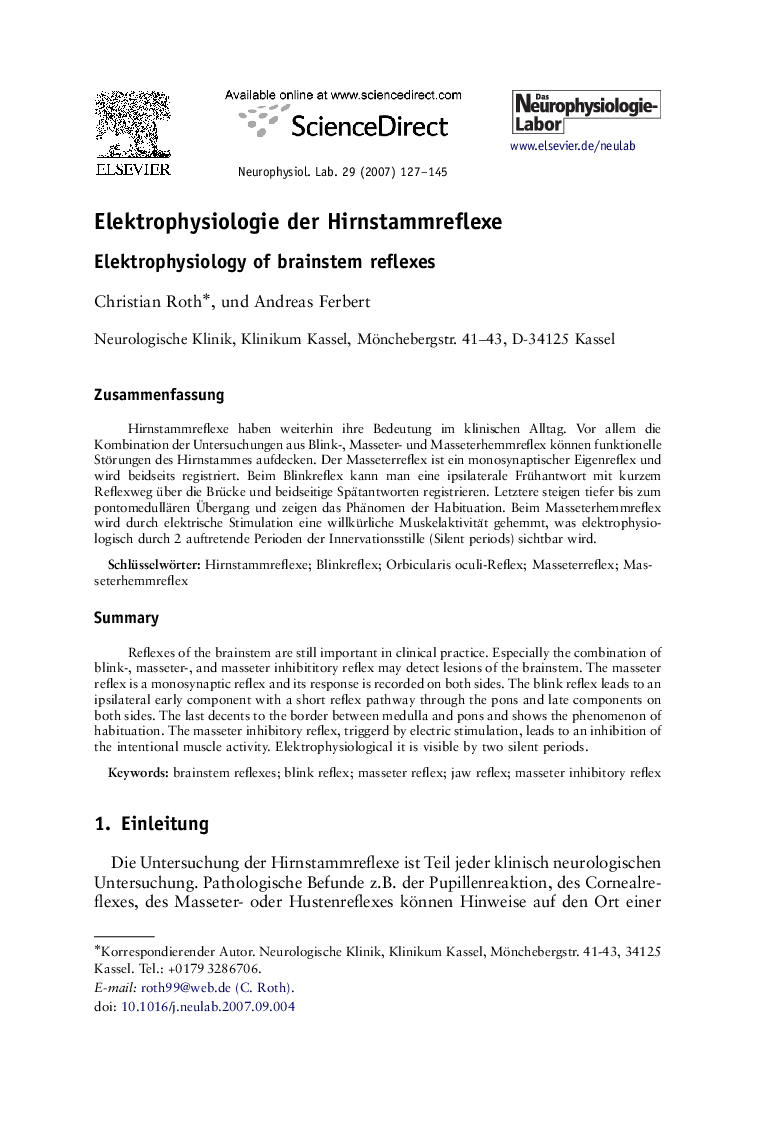| Article ID | Journal | Published Year | Pages | File Type |
|---|---|---|---|---|
| 2687701 | Das Neurophysiologie-Labor | 2007 | 19 Pages |
ZusammenfassungHirnstammreflexe haben weiterhin ihre Bedeutung im klinischen Alltag. Vor allem die Kombination der Untersuchungen aus Blink-, Masseter- und Masseterhemmreflex können funktionelle Störungen des Hirnstammes aufdecken. Der Masseterreflex ist ein monosynaptischer Eigenreflex und wird beidseits registriert. Beim Blinkreflex kann man eine ipsilaterale Frühantwort mit kurzem Reflexweg über die Brücke und beidseitige Spätantworten registrieren. Letztere steigen tiefer bis zum pontomedullären Übergang und zeigen das Phänomen der Habituation. Beim Masseterhemmreflex wird durch elektrische Stimulation eine willkürliche Muskelaktivität gehemmt, was elektrophysiologisch durch 2 auftretende Perioden der Innervationsstille (Silent periods) sichtbar wird.
SummaryReflexes of the brainstem are still important in clinical practice. Especially the combination of blink-, masseter-, and masseter inhibititory reflex may detect lesions of the brainstem. The masseter reflex is a monosynaptic reflex and its response is recorded on both sides. The blink reflex leads to an ipsilateral early component with a short reflex pathway through the pons and late components on both sides. The last decents to the border between medulla and pons and shows the phenomenon of habituation. The masseter inhibitory reflex, triggerd by electric stimulation, leads to an inhibition of the intentional muscle activity. Elektrophysiological it is visible by two silent periods.
